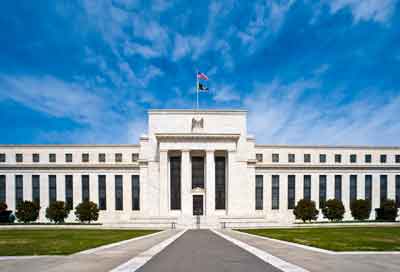“The Impact Has Already Been Catastrophic”: Hedge Fund CIO Says “This Crash, Don’t Look For Central Banks To Save Us”
Eric Peters
 “What will it take for the Fed to pause?” I asked, early morning, screens aglow, the smell of impending policy-maker panic drifting across our trading floor like freshly brewed coffee. We were discussing relentless dollar strength, what it means, where it leads. “It’s harder to answer in this cycle, because I don’t really think that dollar strength is specifically because of the Fed, at least not completely,” said Lindsay Politi, our inflation-strategies portfolio-manager, brilliant. “It’s the logical consequence of the QE bubble bursting. Fed tightening is part of it, sure, but it’s not like when the Fed pauses all the root cause of the problems will go away.” “What will it take for the Fed to pause?” I asked, early morning, screens aglow, the smell of impending policy-maker panic drifting across our trading floor like freshly brewed coffee. We were discussing relentless dollar strength, what it means, where it leads. “It’s harder to answer in this cycle, because I don’t really think that dollar strength is specifically because of the Fed, at least not completely,” said Lindsay Politi, our inflation-strategies portfolio-manager, brilliant. “It’s the logical consequence of the QE bubble bursting. Fed tightening is part of it, sure, but it’s not like when the Fed pauses all the root cause of the problems will go away.”
“One thing I’ve learned about market collapses is that what gets you into them won’t get you out of them, and the people who rode the wave on the way up will not be the ones stepping in to buy the bottom,” continued Lindsay. “That’s why, this time, I wouldn’t be looking to central banks to save us,” she said. “Some of this is also because, in a high debt, inflationary world, the US is just a better credit. In this crisis, markets are going to go after sovereign credits. And remember, pricing default risk is about combining default probability and recovery rate.”
“Sovereign nations represent the ultimate collateral free asset,” said Lindsay. “They’re not like corporations, where you can take the plane or factory in bankruptcy; you can’t show up to a nation’s Treasury and seize assets. With sovereign nations, you can’t easily calculate a recovery rate, so it’s all about default probability. For countries whose debt is denominated in currency they can create, default is usually considered very remote. Because it’s not about the ability to pay, they always have the money to pay, it’s about willingness to pay.”
“The only reason a country wouldn’t print money to pay their debt is the social and political costs of depreciating the currency by printing money becomes greater than the cost of defaulting on the debt. The dollar is strong, and in a way it’s a good reserve currency, because the US is economically the least currency-sensitive economy in the world. The US is the ultimate large, closed economy.” According to World Bank data on openness - a measure of an economy’s dependence on trade - the US is at the far extreme.
“The US produces large amounts of food and energy and has a diverse domestic services and manufacturing economy. Americans rarely notice even large currency fluctuations and it has minimal impact on inflation.” The UK, by comparison, is substantially more open than the US and it’s much more dependent on the rest of the world for necessities like food and energy. “By contrast, the average Brit is very aware of sterling weakness and currency fluctuations impact inflation more directly. The point where the UK decides the cost of currency weakness to pay creditors is higher than the cost of default is much closer than it is in the US.”
“There is a temptation for people to now wonder when the Fed will pivot and make these problems all go away,” said Lindsay. “But it’s important to first understand why central bankers did QE in the first place. Central bankers can only directly control nominal interest rates but it’s real interest rates that impact the economy. When inflation is falling, if the central bank can’t cut rates more quickly than inflation is falling then real rates rise despite their rate cuts. Higher real rates are even more disinflationary and it’s possible that central banks lose control in a sort of deflationary spiral.”
“Negative nominal interest rates are not normal. They are a sign of a deeply dysfunctional market. No long-term investor would ever buy them except under duress because they’re guaranteed to lose money. But this fear of a deflationary spiral caused central banks to take yields negative despite the market issues they created. There were concerns about the size of the purchases and that they’d create too much inflation. Central banks rationalized that they knew how to fight inflation and would do so if the time came. I think they grossly underestimated the amount of market distortion they were creating.”
“The moment has come for central bankers to tighten, unwind their market distortions, and the impact has already been catastrophic,” said Lindsay. Year-to-date, the drawdown in the market cap of US bond and equity markets has been over $57 trillion. “And central banks aren’t done yet. Inflation changes the calculus, and many central banks don’t have the option of returning to QE anymore. Remember, they don’t control real rates. So every day they wait to fight inflation, real rates remain too low, the currency weakens creating more inflation, pushing real rates even lower and it becomes an inflationary cycle.”
Anecdote:
“I’ve seen a few bubbles in my career,” said Lindsay Politi, our inflation-strategies portfolio-manager. “I think what’s easy to miss if you haven’t seen one before is how reasonable the valuations seem at the peak,” she continued. “It’s never just speculators pumping up prices, there’s always an entire academic construct justifying the valuations.
- Dow 36,000 was published months before the dot com bubble burst.”
- AIG asserted that they couldn’t imagine losing a single dollar in CDS months before the Bear Sterns bankruptcy.
“I don’t say this to pick on anyone but to point out that most smart people rarely see them coming.” It all makes perfect sense until it doesn’t.
And a lot of people don’t even realize they’re experiencing a bubble burst until it’s almost over. Bubbles bursting are not just about inflated prices falling, they’re about the recognition that an entire way of thinking was wrong.
“QE, like many justifications for ridiculous valuations before it, was a bubble. And what we’re experiencing now is a bubble bursting.” A 30+ trillion-dollar bubble, by far the largest in history.
“It’s important to remember that the bursting of a bubble takes a long time to play out. It may feel fast and chaotic at various points in the process, but it isn’t really. Look at 2008. Everyone thinks of Lehman’s Bankruptcy on September 15, 2008, as the big catalyst for that crisis, but the S&P 500 had peaked the previous November. Bear Sterns failed on March 13th, 2008. From the Friday before Lehman’s bankruptcy to the end of that month, the S&P was only down 7%. The real weakness was in October with a local low in November.”
The final bottom wasn’t until March of the next year. “The bubble was bursting before Lehman Brothers.” That was just the large cathartic event that caught our attention, ignited our imagination. “And even after that it took months for the market to bottom. Markets don’t clear imbalances instantaneously. So we should be preparing ourselves for a marathon, not a sprint.”
 Eric Peters is the Founder, CEO, and CIO of One River Asset Management and its subsidiary, One River Digital Asset Management. One River is an innovative investment manager dedicated to delivering high-conviction discretionary and quantitative strategies that help its clients build superior portfolios. One River sees the world in a period of major economic and political transition, with the investment landscape shifting in ways that will make the coming ten years look profoundly different from the past decade. Its strategies are built to profit from this dynamic environment while providing strong diversification benefits to traditional investment portfolios. Eric Peters is the Founder, CEO, and CIO of One River Asset Management and its subsidiary, One River Digital Asset Management. One River is an innovative investment manager dedicated to delivering high-conviction discretionary and quantitative strategies that help its clients build superior portfolios. One River sees the world in a period of major economic and political transition, with the investment landscape shifting in ways that will make the coming ten years look profoundly different from the past decade. Its strategies are built to profit from this dynamic environment while providing strong diversification benefits to traditional investment portfolios.
Prior to founding One River in 2013, Eric served as Chairman of Grant Capital Partners, a $1.25 billion discretionary global macro hedge fund. In that role, Eric focused on thematic investment opportunities and was responsible for all non-investment activities including the direct oversight of the Chief Risk Officer. Over the course of his career, Eric has held various positions that include portfolio manager for Peloton Partners, proprietary trader for both Lehman Brothers and Credit Suisse, and Founder and Chief Executive Officer of a TH Lee Putnam funded technology firm.
Eric travels extensively, exchanging ideas, debating policy, and identifying investment opportunities with many of the world’s top investment managers, economists, strategists, political consultants, academics, scientists, and business leaders. The content of those discussions often finds its way into his weekly investment letter - Weekend Notes - which is read by investment professionals who directly deploy over $1trln in alternative assets.
www.oneriveram.com
|


